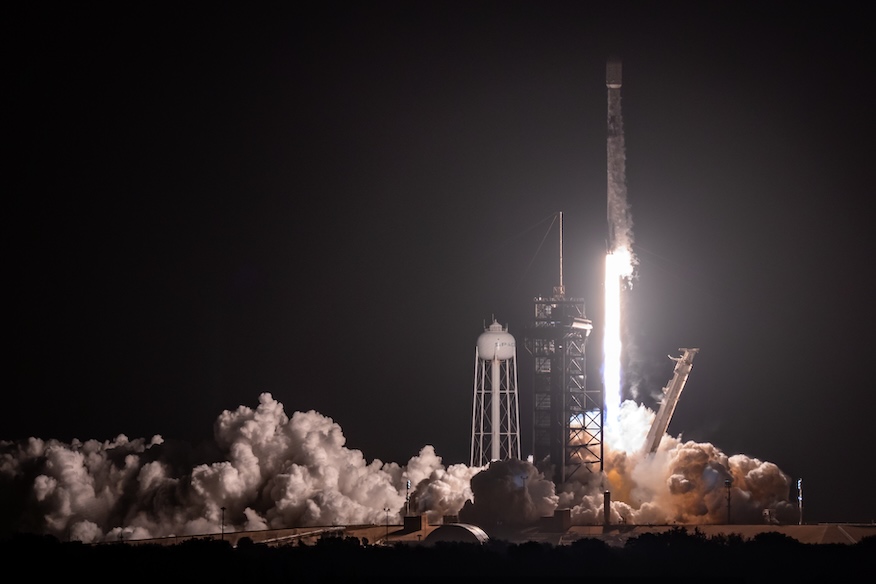
Update 11:45 p.m. ET: SpaceX launched the Starlink 6-42 mission close to the end of the launch window.
SpaceX managed to thread the needle with the weather and launch the first of two planned Starlink missions from Cape Canaveral in 48 hours. A Falcon 9 rocket launched from pad 39A at the Kennedy Space Center on Saturday at 11:09 p.m. EDT (0309 UTC on Sunday). It will be followed by another Falcon 9 from nearby pad 40 on Cape Canaveral Space Force Station on Monday.
In a forecast issued by the 45th Weather Squadron on Friday, Space Force meteorologists gave Saturday’s launch a 75-percent chance of acceptable weather. The main concerns are for highs winds and breaching the cumulus cloud rule associated with the risk of lightning. SpaceX pushed to nearly the end of its launch window on Saturday to make the mission happen.
The mission was originally scheduled for Friday evening but SpaceX abandoned that attempt citing bad weather. The decision to scrub the launch came Friday afternoon as the rocket was rolling out of the hangar at launch complex 39A. The Falcon 9 was not raised vertical until late Friday night.
The Falcon 9 first stage assigned to the Starlink 6-42 mission made a record-tying 19th flight. Booster 1060 first flew in June 2020 and has made 12 previous Starlink delivery missions. It most recently launched on Feb. 15 placing the IM-1 commercial lunar lander on course for the Moon.
The Falcon 9 first stage landed on the drone ship ‘Just Read the Instructions’ about eight and half minutes into the flight. Two burns of the rocket’s second stage placed the 23 second-generation Starlink satellites into orbit, with deployment occurring about one hour, five minutes after launch.
Another batch of Starlink satellites are scheduled to fly from Space Launch Complex 40 at Cape Canaveral on Monday during a four-hour launch window that opens at 5 p.m. EDT (2100 UTC). More Starlink’s will head to space later in the week from SpaceX’s West Coast launch pad at Vandenberg Space Force Base in California.
Late last year, SpaceX said it had 2.3 million subscribers in more than 70 countries for its Starlink internet service. Since 2019 the company has launched 6,031 satellites according to statistics compiled by Jonathan McDowell, an astronomer at the Harvard-Smithsonian Center for Astrophysics, who maintains a space flight database. Of those satellites 5,634 remain in orbit and 5,564 appear to be working normally, according to McDowell’s latest update on March 22, 2024.
source: spaceflightnow.com